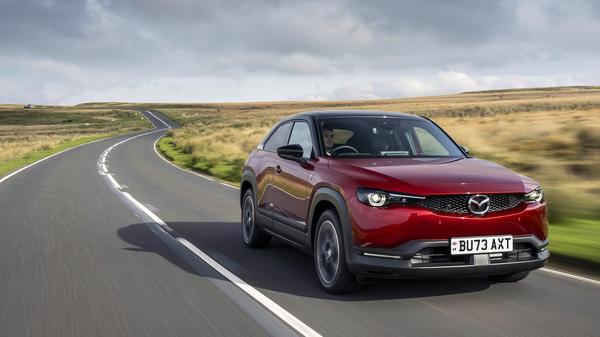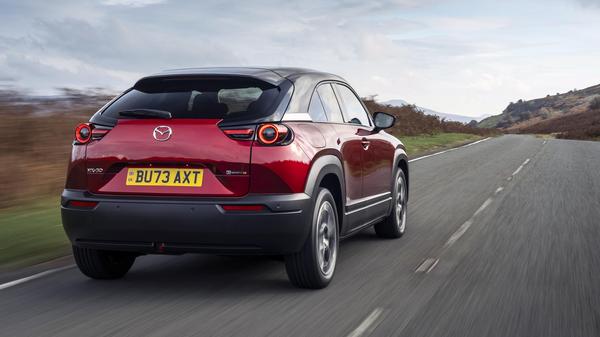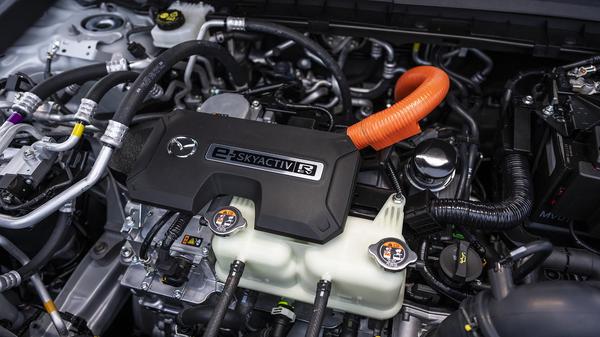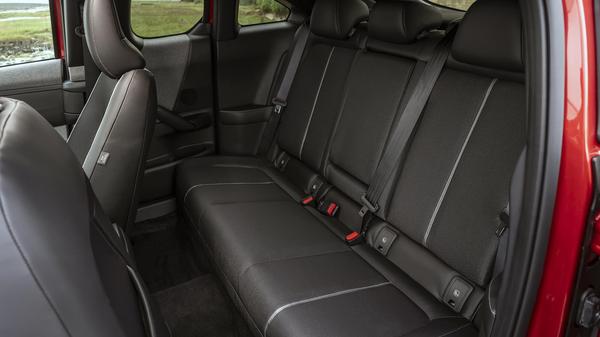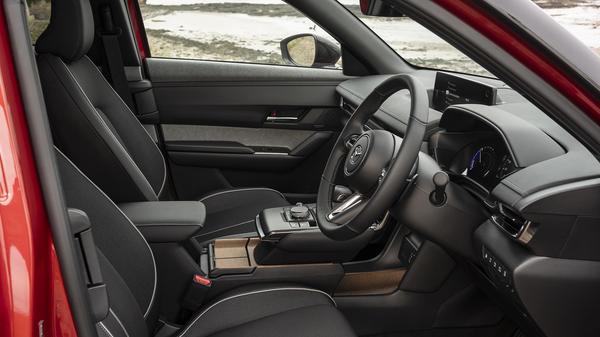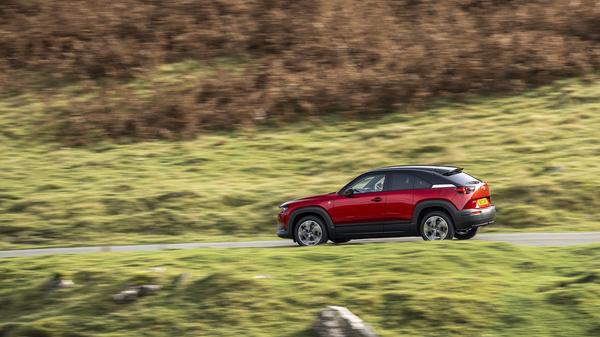The MX-30 R-EV can do up to 53 miles on battery power alone by official figures, which should cover most local trips. When you need to go further it then uses the petrol engine as a generator to power the electric motor instead. This makes the MX-30 R-EV very smooth as it is never directly driven from the petrol engine, and you always have the nippy, instant acceleration you get in fully electric cars at your disposal. A similar concept can also be found in the Nissan Qashqai e-power hybrid.
The switchover between the battery and generator is almost imperceptible, except for a distant hum from under the bonnet when the rotary engine kicks in and the corresponding triangular motif that appears on the driver display. The MX-30 is not quick by electric car standards, but it has enough get-up-and-go that joining motorways and navigating traffic are easy.
The MX-30 R-EV has three driving modes all with their own distinct purpose. Most of the time owners are likely to use Normal mode where the car chooses which fuel to use based on the remaining charge in the battery. EV mode will only use the battery, perfect for low emission zones and urban areas. While Charge mode uses the generator to power the car and to top up the battery. In this mode the engine is noisier, and your petrol consumption takes a hit. This mode is most useful if you want to have more range left in the battery for the final leg of your journey, and most people are unlikely to use it often.
What is a rotary engine and why does it matter?
Mazda is very proud of its engineering heritage, and especially its successful production of nearly two million rotary-engined vehicles. The major difference between rotary and regular engines is that they use a triangular ‘lobe’ spun around an oval chamber by the combustion of air and fuel, where most engines use the same process to push pistons up and down within a circular bore.
While complex in theory rotary engines are smaller, have fewer moving parts and can create more power for their size than a conventional engine, though historically have suffered reliability problems and proven thirsty. Emissions have also been difficult to manage in the past. Nonetheless, Mazda fans fondly associate the rotary engine with cars such as the Cosmo, RX-7 and RX-8 to name a few, though the new MX-30 R-EV is different.
Rather than using the rotary engine to drive the wheels in the conventional manner Mazda uses it as a generator to help extend the range of its electric car. The small size saves kilos, and it can be positioned to help improve overall weight distribution. Mazda is not the first manufacturer to use a small, range extending engine in its cars, BMW launched its
i3 with the option of an adapted scooter engine operating in the same way. Like most manufacturers it subsequently decided a bigger, more efficient battery was its preferred method for going further between charges and the ‘range extender’ model was dropped. Mazda, like Nissan, reckons there’s still a place for such systems, though, leading to this recent revival.
